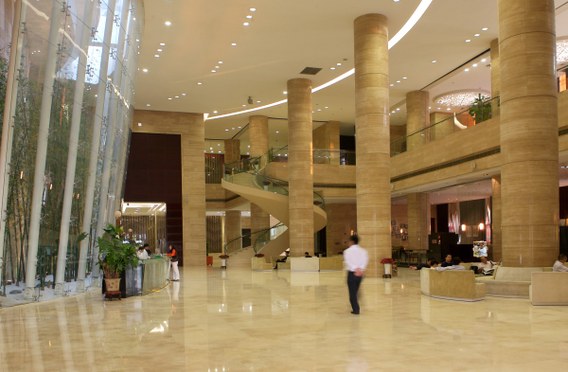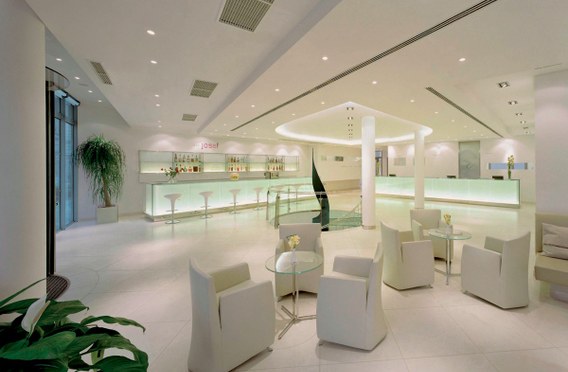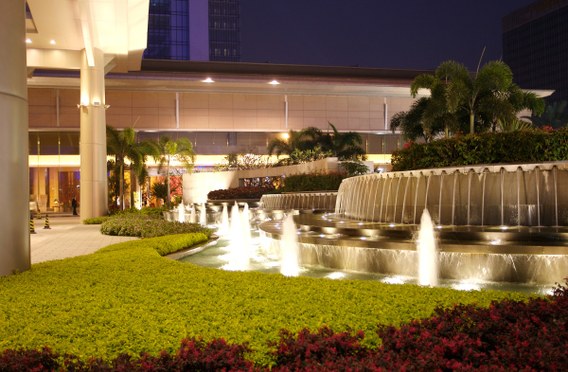Hotel
Creating the right environment
A hotel may be divided into a number of environments within a building envelope.
- Public areas such as reception areas and circulation spaces. Here the atmosphere should be one of intimate efficiency, providing reassurance and direction with a personal feel.
- Personal areas such as hotel bedrooms. Here the ambience should vary from welcoming on first entry to relaxing for the end of a tiring day.
- Business areas such as conference facilities and meeting rooms. Here the feel should be that of a prestige office space projecting an image of professional competence.
- Leisure areas such as restaurants and fitness centres. These should allow a feeling of luxury and individuality within public areas.
Best practice
There is limited formalised guidance for hotel lighting. The European Standard EN 12464-1:2011 Light and lighting – Lighting of work places Part 1: Indoor work places provides recommendations for a few key points such as reception desks, conference rooms and corridors, but does not provide advice on most of the key areas within a hotel. In hotels lighting is frequently more concerned with creating atmosphere as opposed to providing definitive illuminance levels, and much of the effect is through contrast and patterns of light.
To create this in public areas the lighting should be layered with general lighting providing a background light level allowing safe movement and orientation, accent lighting which is used to create an ambience and spaces of light, and decorative lighting which creates points of special interest such as works of art, architectural highlights, etc. These should be used as part of a coherent design and care should be taken to preserve the flow and overall balance of lightness in the scene. The balance between general lighting and accent lighting will vary the ambience from simple (predominantly general lighting) to luxury (predominantly accent lighting). Customer care points such as reception and concierge desks should also be accented to aid in customer orientation.
In private spaces lighting should be localised within the context of the furnishings and be easy to control, allowing occupants to set an ambience to suit the mood and needs. The aim should be to provide a domestic atmosphere whilst still providing illumination for service staff to maintain the room.
Part of the less-visible merchandising of a hotel is the appearance of the staff. Ensuring lighting of staff so they appear friendly and so that body language is readily visible is important in projecting a friendly and approachable image. EN 12464-1:2011 provides recommendations for cylindrical illuminance to ensure good lighting of verticals, 150lx at 1.2m height. It also discusses the modelling index, the ratio between the horizontal and vertical flow of light to provide the correct balance between light and shade, and gives recommended values.
Taking control
In hotel lighting flexibility is important and therefore easy scene setting should be provided allowing the correct lighting to be active as required. This is important in business areas where setting the lighting for presentations, meetings, interviews etc. will be required, in bedrooms where simple controls should be accessible from key points such as the room entrance and the bed, and also in restaurants and public spaces where the lighting in the morning should be bright and stimulating but at night should be more subdued and relaxing.
Dimming controls should allow reduced light levels during the night, promoting quality sleep, and also in areas with significant quantities of daylight during the day.
For back of house areas presence detection should be used to prevent unnecessary lighting being active in empty areas.
Key products for this application are:
- Garbo
- D-CO LED
- Lightstream2
- Chalice LED ECO



